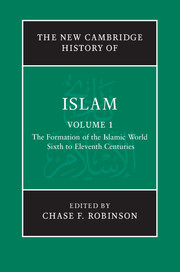Crossref Citations
This Book has been
cited by the following publications. This list is generated based on data provided by Crossref.
Munt, Harry
1920.
The Holy City of Medina.
Robinson, Chase F.
2011.
The Roman Empire in Context.
p.
229.
Berger, Lutz
2013.
The Encyclopedia of Global Human Migration.
2014.
Creating a New Medina.
p.
496.
Cook, Michael
2015.
The Cambridge World History.
p.
385.
MANZ, BEATRICE F.
2016.
The Empire of Tamerlane as an Adaptation of the Mongol Empire: An answer to David Morgan, “The Empire of Tamerlane: An Unsuccessful Re-Run of the Mongol State?”.
Journal of the Royal Asiatic Society,
Vol. 26,
Issue. 1-2,
p.
281.
Chaney, Cassandra
and
Church, Wesley T.
2017.
Islam in the 21st century: Can the Islamic belief system and the ethics of social work be reconciled?.
Journal of Religion & Spirituality in Social Work: Social Thought,
Vol. 36,
Issue. 1-2,
p.
25.
Shepard, Jonathan
2019.
The Cambridge History of the Byzantine Empire c.500–1492.
Haider, Najam
2019.
The Rebel and the Imam in Early Islam.
RAHMAN, Hafijur
2020.
An Evaluation of the Aqabah Pledges and the Charter of Medina to the Birth of Political Authority in Islamic Political Thought.
İnsan ve Toplum Bilimleri Araştırmaları Dergisi,
Vol. 9,
Issue. 5,
p.
3379.
Kalra, Prajakti
2022.
Locating Central Eurasia’s inherent resilience.
Cambridge Review of International Affairs,
Vol. 35,
Issue. 2,
p.
235.
Udaondo Alegre, Juan
2022.
“If you want to pray to Mercury, wear the garments of a scribe:”
kuttāb
,
udabāʾ,
and readers of the
Ghāyat al-Ḥakīm
in the court of ʿAbd al-Raḥmān III
.
Journal of Medieval Iberian Studies,
Vol. 14,
Issue. 2,
p.
201.
BOISLIVEAU, Anne-Sylvie
BOUDIER, Mathilde
and
VALLET, Eric
2023.
Le Coran en contexte(s) omeyyade(s) : introduction.
Archimède. Archéologie et histoire ancienne,
Vol. 10,
Issue. ,
p.
1.





